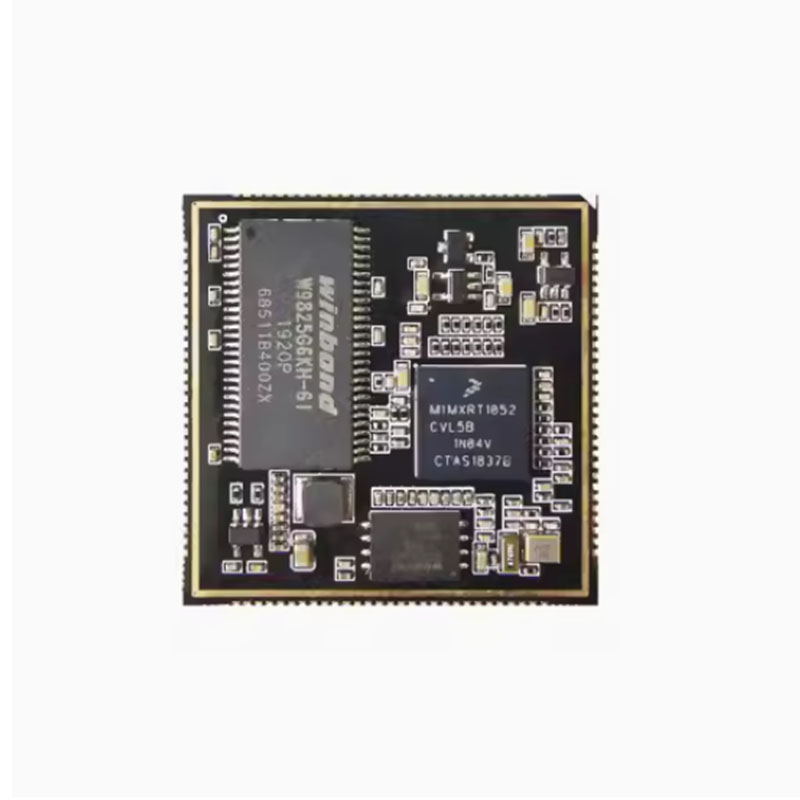The difference between Core Board and Mainboard
2025-06-25
The Core Board and Mainboard are both essential components in modern electronic devices, particularly in computing and telecommunications hardware. However, they serve different purposes and are distinct in their structure and function. This essay will explore the differences between the core board and the mainboard, focusing on their roles, design, and integration into various systems.
Core Board: Definition and Function
A core board, also known as a system-on-module (SoM), is a compact, integrated circuit board that encapsulates the essential processing components required for a specific application. These components typically include a processor (such as a CPU or microcontroller), memory (RAM and ROM), power management circuits, and sometimes networking modules (like Ethernet or Wi-Fi). The core board is designed to be modular, meaning it can be easily inserted into a larger system without the need for extensive re-engineering.
The primary function of a core board is to serve as the "brain" of a device, handling all the essential processing and computational tasks. It is often used in embedded systems, where space and power constraints are critical factors. Examples of devices that use core boards include industrial machines, IoT (Internet of Things) devices, and robotic systems.
Core boards are known for their flexibility and scalability. Manufacturers can design various systems with different configurations and use the same core board platform, reducing development time and costs. The modularity also allows for easy upgrades, as developers can replace or upgrade the core board while keeping the other system components unchanged.

Mainboard: Definition and Function
A mainboard, or motherboard, is a larger and more complex circuit board that serves as the central hub for connecting all of a device's components. Unlike a core board, the mainboard incorporates a wide array of connectors, sockets, and slots to support various peripherals and expansion cards. It is the primary platform where critical components like the processor, RAM, storage devices, input/output ports, and graphics processing units (GPUs) are mounted or connected.
The mainboard is the backbone of most consumer electronics, including desktop computers, laptops, smartphones, and game consoles. It provides the physical connections for all components, ensuring they can communicate with each other. For instance, the CPU communicates with the RAM and the GPU through the mainboard's bus system, while input devices like keyboards or mice are connected via USB ports or specialized connectors on the mainboard.
Mainboards are designed to support expandability and customization. They often include slots for additional components like graphics cards, sound cards, or network interfaces. In desktop computers, the mainboard's flexibility allows users to upgrade their systems by swapping out older components for newer, more powerful ones.
Key Differences Between Core Board and Mainboard
Purpose and Functionality:
A core board is a compact, modular board that contains the essential processing components for a specific application, often used in embedded systems. It is designed for small, space-constrained devices.
A mainboard is a larger circuit board that connects all of a device's components, providing the infrastructure for communication and expansion. It supports a wider range of peripherals and is typically used in consumer electronics.
Size and Integration:
Core boards are smaller and more integrated, often having a system-on-chip (SoC) design with limited customization options.
Mainboards are larger and have more complex designs, with multiple sockets, connectors, and expansion slots for a variety of components.
Modularity vs. Expandability:
Core boards are modular, meaning they can be easily swapped or upgraded without replacing the entire system. This is ideal for embedded systems where space and energy efficiency are key.
Mainboards offer expandability, with multiple slots and ports for upgrading or adding components. This is more suited to systems where customization and future upgrades are required.
Applications:
Core boards are predominantly used in embedded systems, IoT devices, robotics, and industrial applications. These systems require a small footprint and efficient power usage.
Mainboards are found in personal computers, laptops, gaming consoles, and consumer electronics, where there is a need for flexibility in hardware configuration and expansion.
Customization and Upgrades:
Core boards are less customizable compared to mainboards. They are typically designed for specific tasks and often come preconfigured with limited options for modification.
Mainboards are highly customizable, particularly in desktop computing, where users can swap out parts like RAM, storage, or even the CPU for better performance.
Complexity:
A core board is simpler in terms of components but more specialized in its design for specific tasks.
A mainboard is more complex, integrating a wide array of components, connectors, and functionalities to support a broad spectrum of use cases.
Conclusion
In summary, the core board and mainboard are both crucial components in modern electronics, but they serve different roles within a device. The core board is a compact, modular system designed for specialized applications, often found in embedded and industrial systems. On the other hand, the mainboard is the central platform for connecting various components, offering expandability and flexibility, and is typically found in consumer electronics like computers and smartphones. Understanding the distinctions between these two boards is essential for anyone involved in hardware development, as each plays a vital role in the performance and functionality of the overall system.


